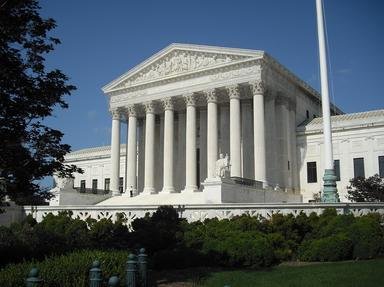Quiz Answer Key and Fun Facts
1. Although she was born in the Bronx, where were Sonia Sotomayor's parents born?
2. When she was first appointed to the federal bench in 1992, Sotomayor told the "New York Times" that she had wanted to be a judge ever since she was a little girl, watching which television program?
3. Sonia Sotomayor majored in history at Princeton, and after graduating went to law school in 1976 at which other Ivy League university?
4. After graduating from law school, Sotomayor was hired as an assistant district attorney for New York County under which influential district attorney?
5. Sonia Sotomayor was nominated for a spot on the federal bench in 1992 on the court for the Southern District of New York by President George H.W. Bush on the recommendation of Sen. Daniel Patrick Moynihan. Moynihan made what prediction at the time that would later prove true?
6. One of Sotomayor's most famous opinions while on the court for the Southern District of New York was issued on March 30, 1995 and ended what event that lasted for 232 days?
7. Sotomayor was nominated by Bill Clinton for a judgeship on the Second Circuit Court of Appeals in 1997. This nomination caused controversy and was delayed by Senate Republicans until which Republican New York senator was able to convince his party to let the Senate vote on her confirmation?
8. Her nomination to the Supreme Court in 2009 by Barack Obama brought back memories of the fight to confirm her appointment to the Second Circuit nearly twelve years prior. Republicans attacked her on, among other things, her ruling in Ricci v. DeStefano, a ruling that had recently been overturned by the Supreme Court. That case involved what controversial topic?
9. The very first case Sotomayor heard on the Supreme Court was the infamously controversial Citizens United v. FEC, a decision that struck down bans on independent political expenditures. How did Sotomayor rule in this case?
10. The first case in which Sotomayor wrote the majority opinion was Mohawk Industries, Inc v. Carpenter, a case involving attorney-client privilege. However, it is the first time a Supreme Court opinion used which term?
Source: Author
Joepetz
This quiz was reviewed by FunTrivia editor
stedman before going online.
Any errors found in FunTrivia content are routinely corrected through our feedback system.

